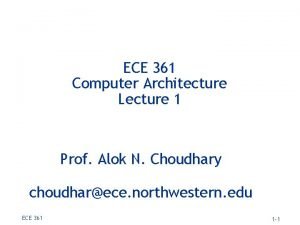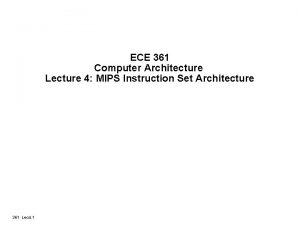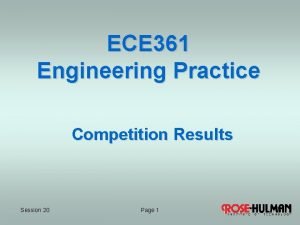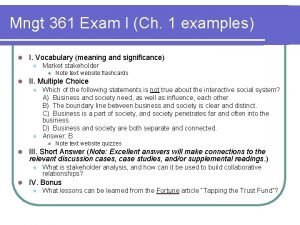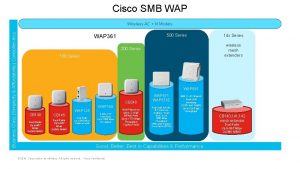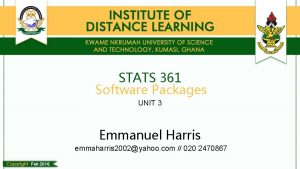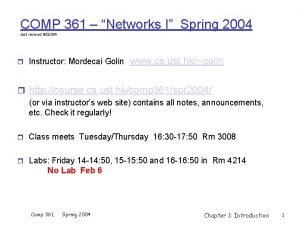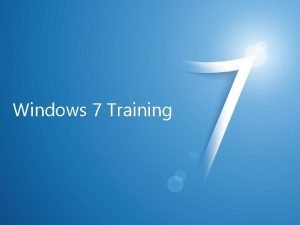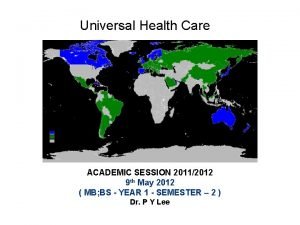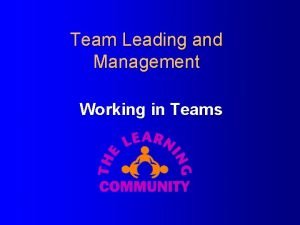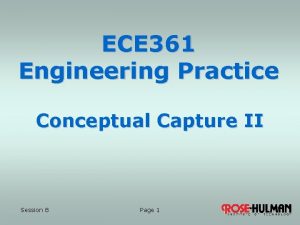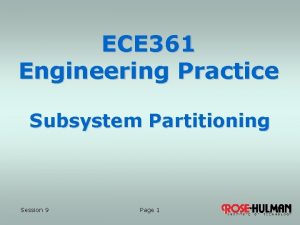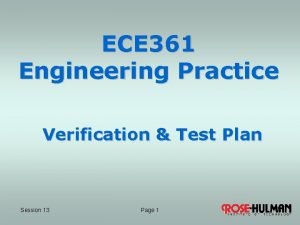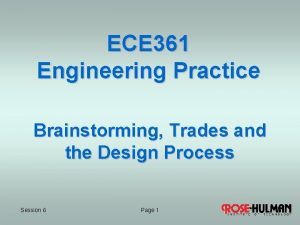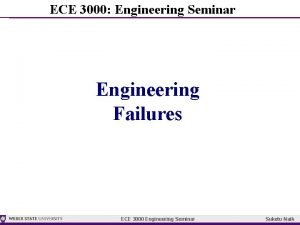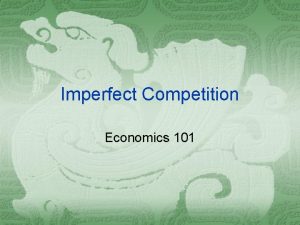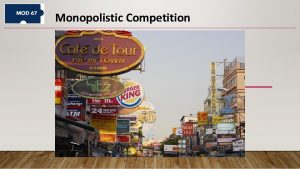ECE 361 Engineering Practice Competition Results Session 20





























- Slides: 29

ECE 361 Engineering Practice Competition Results Session 20 Page 1 1

RHIT Public Relations Press Release RHIT website http: //www. rose-hulman. edu/news/articles/ecerobot. htm Session 20 Page 2 2

Other Photos Session 20 Page 3 3

Other Photos Session 20 Page 4 4

Other Photos Session 20 Page 5 5

Other Photos Session 20 Page 6 6

Other Photos Session 20 Page 7 7

ECE 361 Engineering Practice Oral Reporting Session 20 Page 8 8

Design Process Assures Design will meet Requirements Stage 1 – Problem Definition & Potential Solutions Stage 2 – Design Stage 3 – Verification Requirements Specification Brainstorming Trades Preliminary Design Requirements vs. Capabilities Detailed Design Review Implementation Testing Reporting This process is part of what we call Systems Engineering Session 20 Deliver = $$$ Page 9 9

Purpose of ECE 361 Oral Report • To highlight the significant aspects of your team’s design experiences such as – – – • • Design process Team skills Communication Personal Responsibilities Workload To suggest course revisions To gain experience in making professional presentations Session 20 Page 10 10

ECE 361 Oral Report Details • Describe the role of course materials and procedures in the design process − − − − • Team skills: Meetings, communications, responsibilities Creativity Brainstorming Decision-making Design review Verification and Testing Team dynamics Detail “Lessons Learned” – – – Session 20 Decisions that were sound and useful Decisions that you would change Decisions that were poor, would not to be repeated Page 11 11

Future Course Suggestions • • What features of the course would you keep? What features of the course would you change? What features of the course would you omit? Provide the outline the PDS for a future design project Session 20 Page 12 12

EFFECTIVE ORAL PRESENTATIONS Dr. Fred Brockhurst Session 20

EFFECTIVE ORAL PRESENTATIONS Session 20

INTRODUCTION (What We Plan To Do) • Introduce ten points for preparing and delivering an oral presentation about technical material • Whole - Part - Whole organization • Emphasize that presentation is for the audience Session 20

1. Know Your Audience • Know what your audience already knows • If it’s your boss, know what’s necessary for further selling • Try to determine the mindset Session 20

1. Know Your Audience Session 20

2. Put it on Paper (or in an outline form) • The best way to organize your thoughts Session 20

3. Use a Photo or Graphic • Visuals are critical to a good presentation • Should be pleasing to the eye • Avoid excessive words – Use handouts • Always avoid excessive use of equations - Put derivations in handouts • Use to support points Session 20

4. Show and Tell • Use physical samples if possible • Technical audiences are “touchy - feely” oriented Session 20

5. Don’t be Afraid to Repeat Yourself • Whole - Part - Whole • Introduction (Tell them what you’re going to tell them) • Body (Tell them) • Summary (Tell them what you told them) Session 20

6. Practice, Practice • The more you do it, the easier it gets • Don’t memorize, know material • Timing is very important • Eliminate “um’s” and “you know’s” Practice Session 20 Practice Practice Practice

7. Be Ready to Answer Questions • Goal is to entice audience to want to understand know more • Set aside time for questions • Watch audience for unasked questions • Answer question to best of your ability, if you don’t know the answer - say so and offer to find the answer Session 20

8. Let Your Body Do The Talking Session 20

8. Let Your Body Do The Talking • • Show confidence and interest Maintain eye contact Watch your hands Personal appearance (pride) Session 20

9. Don’t Forget the Details • Is the equipment there? • How does the equipment work? Session 20

10. Listen • Must listen closely with sensitivity • Try to understand where other disciplines are coming from Session 20

SUMMARY What We’ve Done Today • Introduced and discussed ten points for preparation and delivery of an oral presentation • Discussed the Whole - Part - Whole technique • Emphasized that the presentation is for the audience Session 20

Questions? ? Session 20
 Ece 361
Ece 361 Ece 361
Ece 361 Ece 361
Ece 361 Characteristics of monopoly
Characteristics of monopoly Monopoly vs monopolistic competition
Monopoly vs monopolistic competition Market structures venn diagram
Market structures venn diagram Perfect competition vs monopolistic competition
Perfect competition vs monopolistic competition Wa state rx services
Wa state rx services Mngt 361 exam 1
Mngt 361 exam 1 Smbse cisco training
Smbse cisco training Stats 361
Stats 361 Hymn 361
Hymn 361 Ee 361
Ee 361 Said kerrache
Said kerrache Comp 361
Comp 361 Practice assessor feedback examples
Practice assessor feedback examples Gmp gep
Gmp gep Engineering ethics in practice a guide for engineers
Engineering ethics in practice a guide for engineers Board of professional engineers texas
Board of professional engineers texas Scope of engineering ethics
Scope of engineering ethics System architecture example
System architecture example Forward engineering in software engineering
Forward engineering in software engineering Dicapine
Dicapine Engineering elegant systems: theory of systems engineering
Engineering elegant systems: theory of systems engineering Reverse engineering vs forward engineering
Reverse engineering vs forward engineering Windows 7 compatibility center
Windows 7 compatibility center Welcome to the new session
Welcome to the new session Session
Session Skill 23 anticipate the topics
Skill 23 anticipate the topics Team norming session
Team norming session
